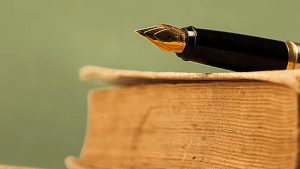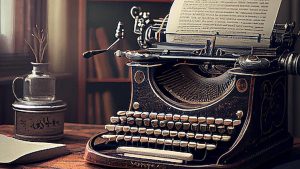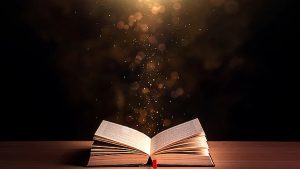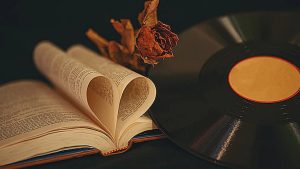Characteristics Of Poetry: Poetry is a sophisticated literary form that typically emphasizes figurative language in addition to the aesthetic value of the words and lines and the overall meaning of the words. Poetry is a distinctive and fascinating art form due to several elements.
The characteristics of poetry are what gives it its identity and set its writing style apart from other literary forms. Interstingly, poetic conventions are not set in stone, and there are no strict rules on how to write poetry. Although there are no hard-and-fast guidelines for composing poetry, there are some established characteristics that may be easily identified in poems, making it possible to distinguish poetry from other forms of literature. On that note, this article explores the characteristics of poetry.
Also see: How to Introduce a Guest Speaker: 8 Tips to Properly Introduce Someone
Features/Characteristics of Poetry
The “characteristics” of poetry set it apart from other literary forms. Depending on the poet, the type of poetry, and the era in which it was written, the qualities of poetry might change. However, poetry has a few recurring traits, such as:
1. Imagery: Poetry is often characterized by the use of vivid language that engages the senses to evoke an imaginative picture in the reader. The use of descriptive language to evoke the reader’s senses or conjure up mental images is referred to as imagery.

It entails utilizing vivid and evocative language to appeal to the reader’s senses, such as sight, sound, touch, taste, and smell. Imagery can also be employed in other literary forms like prose, and drama, to enhance the overall atmosphere or mood of a piece of writing and to convey complex ideas or themes in a more tangible and relatable way.
2. Figurative Language: Poets employ figurative language, another crucial trait of poetry to portray complicated emotions and to give their writing a deeper meaning. The use of words or phrases with connotations other than their literal ones to evoke a particular response or communicate a more nuanced concept is referred to as figurative language.

Literary elements including metaphors, similes, personification, hyperbole, and symbolism are frequently used in this sort of language. Figurative language can be used to paint a more vivid and imaginative picture of a scene or idea in a variety of literary genres, including poetry, prose, and drama. It is frequently employed to elicit feelings or to increase the reader’s engagement and retention of the text.
Also see: Countries With Highest Crime Rates In The World 2023: Top 12
3. Rhythm and Meter: Poetry often has a distinctive rhythm and meter, created through the use of syllables, stresses, and other sound patterns. To establish a particular cadence or flow of words within a poem, rhythm and meter are two essential characteristics of poetry. Poetry lines have rhythm, which is the pattern of stressed and unstressed syllables, and meter, which is the orderly placement of those stressed and unstressed syllables.

A range of approaches, including the repeating of sounds, words, or phrases as well as the use of different types of punctuation, including commas, periods, and dashes, can be used to generate rhythm in poetry. However, the amount of stressed syllables and their placement inside a line of poetry are what define meter. Iambic, trochaic, anapestic, and dactylic meters are the most frequently used forms of meter in English poetry. Each of these meters has a distinct pattern of stressed and unstressed syllables, and poets can employ them to achieve a variety of creative effects, such as underscoring certain words or fostering a sense of motion or momentum within the poem.
4. Sound Devices: To give their writing a musical character, poets often utilize sound techniques like rhyme, alliteration, and assonance. Poetry often employs sound devices to add musical effects, deepen the poem’s emotional impact, and enhance its meaning. These literary devices make use of sound in a variety of ways, including onomatopoeia, alliteration, rhyme, and repetition. To establish a rhythmic pattern or highlight a certain topic, repetition includes using words, phrases or sounds repeatedly. At the end of a line, typically, rhyme is the process of matching the sounds of two or more words.

Using the same consonant sound at the beginning of words in close proximity is referred to as alliteration. This technique produces a musical effect and can be used to highlight specific words or concepts. Using words that mimic the sounds they describe is known as onomatopoeia. Examples include phrases like “buzz” and “whisper.” Other sound strategies in poetry include assonance, which uses the same vowel sound frequently in a line, and consonance, which uses the same consonant sound repeatedly in a line. All of these strategies can contribute to the poem’s overall power and meaning while giving it a distinctive and memorable sound.
Also see: Youngest CEOs In The World (With Pictures): Top 10
5. Compression: Poetry frequently stands out for its capacity to succinctly and powerfully express difficult concepts and feelings. In literature, the capacity to concisely and effectively transmit a lot of information, emotion, or meaning is referred to as compression. This is possible through the use of a variety of literary devices, including symbolism, metaphor, and imagery, which enable the writer to convey intricate thoughts and feelings in only a few words.

Compression is often connected with poetry, where the use of succinct language and images can have a dramatic and emotive influence on the reader. However, compression can also be found in other literary genres, such as short stories, where the author must employ language economy to express a comprehensive narrative in a constrained space.
6. Emotion: Poetry is often a highly emotional form of writing, expressing a range of feelings such as love, loss, anger, and joy. Emotion in poetry refers to the feelings or sentiments that the poet expresses through their words. For the reader to feel anything, poets employ a variety of literary strategies, including figurative language, imagery, and aural effects.

Poetry frequently expresses strong and profound feelings, which might vary from happiness and love to melancholy and despair. To help readers relate to a poem on a personal level, poets might use poetry to create feelings and experiences that are both universal and accessible. Poetic expression requires emotion, which is a crucial element and frequently what gives it its strength and impact.
Also see: Relationship Between Philosophy and Religion
7. Ambiguity: Poetry frequently has a wide range of potential meanings and interpretations. Ambiguity in poetry is the use of words or expressions that have multiple possible meanings. It can deepen and complicate the meaning of a poem and might be purposeful or unintended.

Ambiguity can evoke uncertainty and leave an opportunity for interpretation, encouraging the reader to delve further into the text and contemplate other interpretations. While some poets intentionally utilize ambiguity to give alternate interpretations and challenge accepted perceptions, others may do it just to raise questions or stir up intrigue.
8. Form: Each form of poetry, including sonnets, haikus, and ballads, has its distinctive characteristics and structures. Form in poetry relates to the actual arrangement of the poem, its stanza structure, and its use of rhyme and meter. A poem’s form can significantly affect how it is read and comprehended.

From the sonnet and villanelle to the haiku and the epic, several types of poetry have developed over time and across civilizations. Poets frequently select a specific form to communicate a specific mood or tone or to suit their subject matter. The structure of the poetry can also be employed to instil a sense of order or symmetry, as well as to subvert conventional wisdom and arouse suspense or apprehension.
Also see: Best Laptops For Students 2023 (With Pictures): Top 14 Most Affordable
Conclusion: Poetry is a literary art form in which thoughts, feelings, and experiences are expressed through language. The use of figurative language, imagery, rhythm and meter, sound techniques, compression, and ambiguity are some of its most distinctive characteristics. Poetry is noted for its capacity to succinctly and powerfully convey the essence of a moment or feeling while examining complicated issues. For thousands of years, poetry has been an essential component of human culture, and it is still a crucial form of expression today.